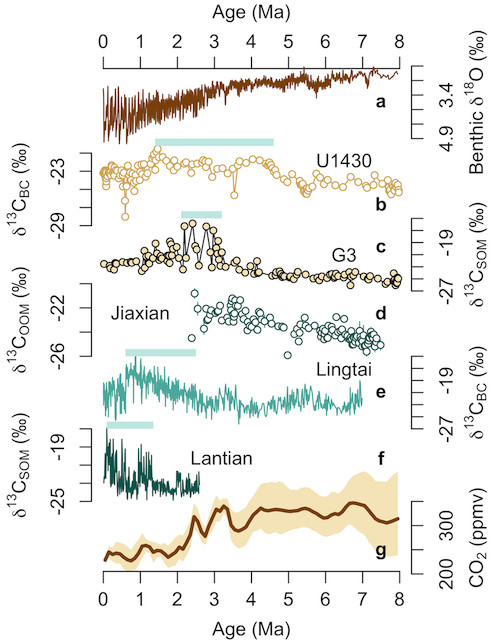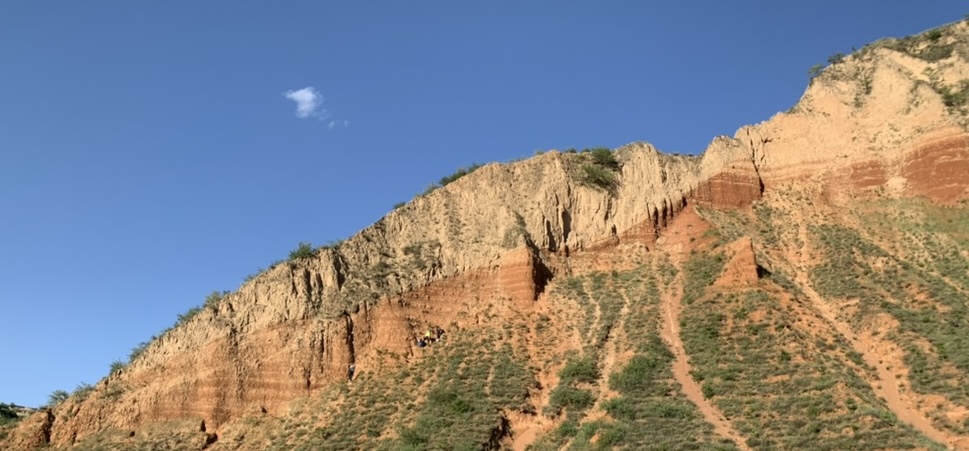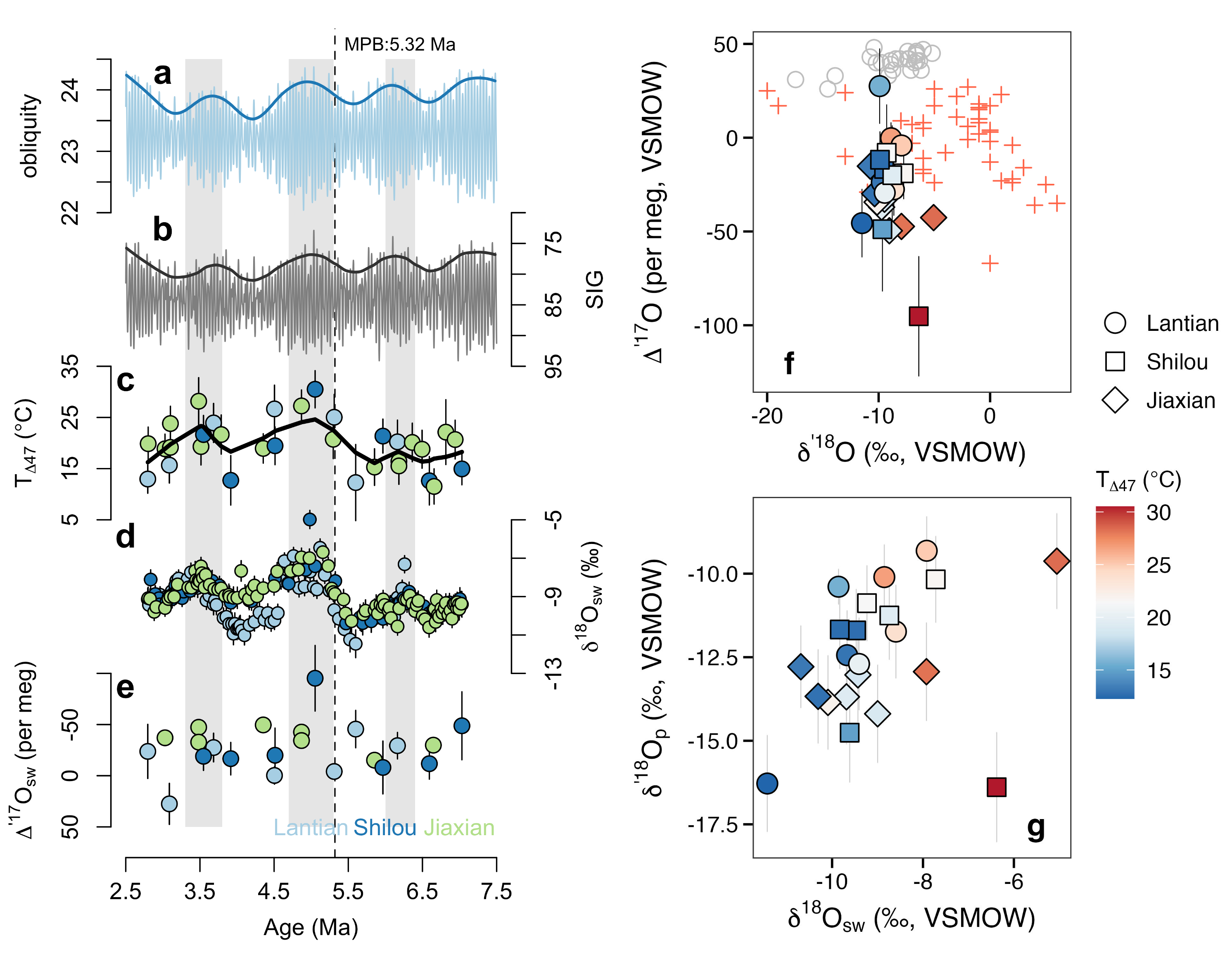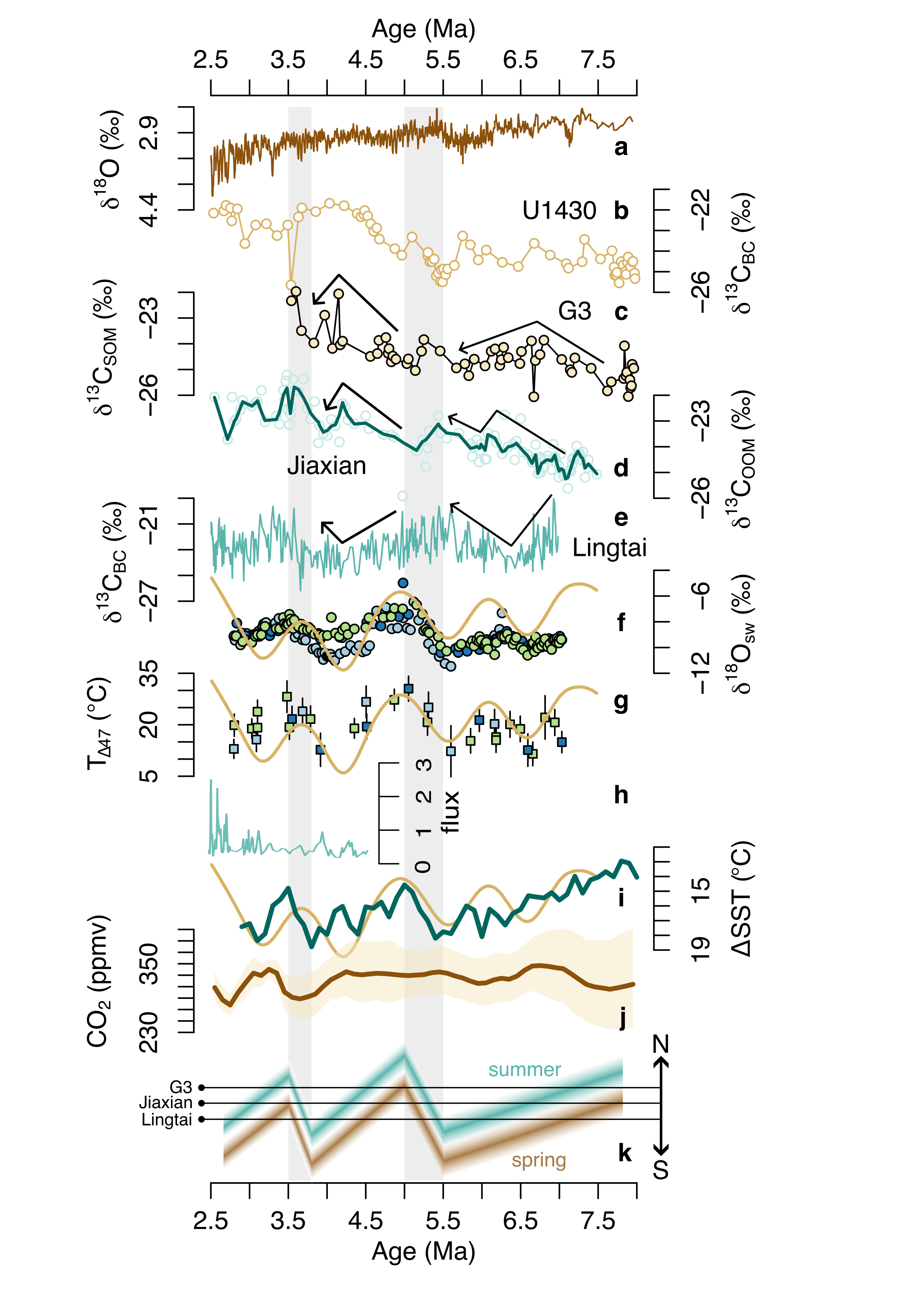Miocene-Pliocene Rainfall seasonality and C4 expansion over East Asia
Rainfall seasonality varies greatly across Earth, ranging from the Mediterranean climate characterized by dry summers and wet winters to the monsoonal climate that experiences heavy rainfall during the summer months. Consequently, the seasonal rainfall distributions have a profound impact on water availability and regional ecosystems. The water cycle in East Asia is primarily driven by the East Asian monsoon system, which interacts dynamically with the westerly jet and regional topography, such as the Tibetan Plateau1. Notably, the Neogene expansion of C4 grassland over East Asia occurred in a spatiotemporally heterogenuous manner, significantly delayed compared to other continents, indicating a crucial role of local effects in this process.

- The \(\delta^{13}\)C records of terrestrial organic matter across East Asia (b-f, from north to south) compared with benthic \(\delta^{18}\)O stack (a) and atmospheric CO2 estimates (g).
Here we propose that C4 expansion over East Asia was primarily driven by rainfall seasonality, which is in turn governed by the latitudinal migration of the westerly jet in response to changes in the meridional temperature gradient. To test this hypothesis, we reconstructed rainfall \(\delta^{18}\)O using the \(\delta^{18}\)O, \(\Delta_{47}\), and \(\Delta^{‘17}\)O of carbonate nodules from the Red Clay formation on the Chinese Loess Plateau, spanning 8-2.5 million years ago. Soil carbonates are generally formed in oxygen isotope equilibrium with ambient soil waters, the latter of which inherit the \(\delta^{18}\)O of rainfall but can be strongly affected by subsequent processes such as evaporation. With the help of soil-carbonate \(\Delta^{‘17}\)O2, we can parse out the effect of evaporation and reconstruct changes in rainfall-\(\delta^{18}\)O, which contain information of regional hydrological cycle and large-scale air circulation patterns.

- The Miocene-Pliocene Red Clay formation on the Chinese Loess Plateau (Location: Shilou, Shanxi).
The reconstructed rainfall \(\delta^{18}\)O are highly consistent with soil water \(\delta^{18}\)O, which show high correspondence with with \(T_{47}\), suggesting coupled variations of temperature and rainfall \(\delta^{18}\)O. This is consistent with changes in seasonality rainfall from isotopically depleted summer rain to isotopically enriched spring rain, as a result of poleward shift in the westerly jet under warmer climates.

- The \(\delta^{18}\)O, \(T_{47}\), and \(\Delta^{‘17}\)O of reconstructed soil waters (c-e). (a-b) The 41-ky obliquity cycle and the summer insolation gradient at 65°N. (f) Reconstructed soil waters compared with global Holocene soil waters (red cross) and modern tap waters across China (gray circles). (g) The \(\delta^{18}\)O of reconstructed rainfall compared with soil waters.
Notably, reconstructed soil water \(\delta^{18}\)O and \(T_{47}\) vary in concert with the 1.2-Myr obliquity amplitude cycle, indicating the first order control of obliquity cycle on westerly jet migration via its influence on the meridional insolation gradient. The falling obliquity amplitude during the Pliocene, together with the global cooling since the Plio-Pleistocene transition, gradually pushed the westerly jet towards the tropics, leading to a southward C4 expansion due to enhanced warm season precipitation.

- (a) benthic \(\delta^{18}\)O stack; (b-e) C4 expansion history; (f-g) reconstructed soil water \(\delta^{18}\)O and \(T_{47}\); (h) dust flux at northern Pacific; (i) Merdional sea surface temperature gradient; (j) atmospheric CO2 estimates; (k) schematic diagram showing the meridional locations of the westerly jet during spring and summer with respect to the organic \(\delta^{13}\)C sites.
Related Publications:
- Da J, Zhang Y G, Li G, et al. Aridity-driven decoupling of δ13C between pedogenic carbonate and soil organic matter[J]. Geology, 2020, 48(10): 981-985.
- Da J, Li G K, Ji J. Seasonal changes in the formation time of pedogenic carbonates on the Chinese Loess Plateau during Quaternary glacial cycles[J]. Quaternary Science Reviews, 2023, 305: 108008.
See detailed explanation in Ding and Chan, 2003. ↩
See detailed explanation in Kelson et al., 2023, GCA. ↩
